LinkedIn is the go-to platform for professionals to expand their network, generate leads, and build meaningful business relationships. However, reaching out to potential clients manually can be tedious and inefficient, especially when scaling your outreach efforts. That’s where automation comes in.
When done right, LinkedIn automation can help you connect with the right prospects and ultimately convert connections into clients. With the right tool, you can stand out and connect with meaningful, high-converting connections.
Table of Contents
LinkedIn Outreach: What Works and What Doesn’t
LinkedIn’s outreach potential is powerful. You can reach millions of people who fit perfectly into your ideal buyer persona without doing much.
The good thing is that only a few social media platforms have a detailed segmented audience base, such as LinkedIn. There are many demographics you can use to filter out your preferred audience.
This is why simply sending out hundreds of connection requests or cold messages without a thoughtful approach rarely leads to meaningful engagement. In fact, this kind of mass outreach can backfire, resulting in low response rates, ignored messages, and even LinkedIn restricting your account for spam-like behavior.
The key to successful LinkedIn outreach lies in quality over quantity.
Unlike traditional cold emailing, LinkedIn allows for a more personal, conversational approach. But only if you take the time to craft messages that resonate. Your outreach should focus on building trust, providing value, and fostering relationships rather than immediately pushing a sales pitch.
To save time and get results at scale, automating the entire outreach process is crucial. However, before automating your LinkedIn outreach, master the fundamental principles of effective LinkedIn networking.
Here’s what works and what doesn’t on the platform:
What Works:
- Personalized messaging that speaks directly to the recipient’s needs, mentioning shared interests or mutual connections.
- Before introducing any offer, provide value first through insightful content, helpful tips, or engaging discussions.
- Following up strategically instead of bombarding connections with repeated messages. A well-timed follow-up increases response rates while keeping conversations natural.
What Doesn’t Work:
- Sending generic connection requests that lack personalization. A vague “I’d like to connect” request doesn’t give people a reason to accept.
- Pitching too soon without first establishing rapport. No one likes an immediate sales message after accepting a connection.
- Spamming multiple people at once can make your account appear suspicious, leading to LinkedIn restrictions.
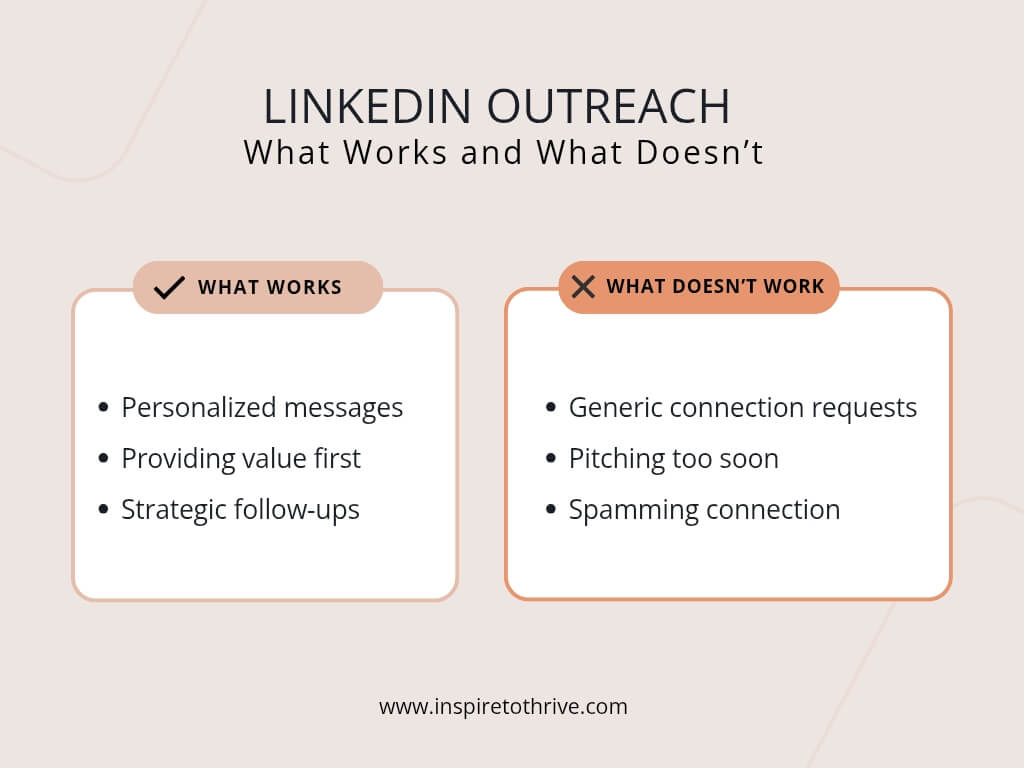
Key Elements of an Effective LinkedIn Outreach Strategy
Although automation can streamline your LinkedIn outreach, it won’t yield meaningful results without a well-structured strategy. The goal is to create a process that feels personal, engaging, and value-driven while reaching the right audience.
Here’s how to ensure your automate LinkedIn outreach is both effective and scalable:
1. Define Your Ideal Audience
Instead of sending connection requests to random professionals, focus on those most likely to benefit from your offer. Define your ideal prospects based on industry, job title, company size, and location. This targeted approach increases the chances of engagement and conversions.
A great way to refine your audience is by identifying their shared pain points. For instance, if you’re targeting sales leaders, their key challenge might be generating quality leads. If you’re reaching out to startup founders, they may need help scaling their business.
Structuring your outreach based on these pain points will make your messages more relevant and compelling.
2. Craft Connection Requests That Get Accepted
Your first message sets the tone for the conversation. Generic requests often result in rejection or being ignored. Instead, personalize them to spark interest and establish a connection.
The easiest way to get ignored is to send generic messages like, “Hi, I’d like to add you to my LinkedIn network.”
If you want to build solid connections you can turn into clients, you must do your research and approach them with interesting facts. For example, you can say, “Hi (first name), I came across your profile and was impressed by your work in (mention the Industry). I’d love to connect and exchange insights.”
If you have a mutual connection, shared interest, or recent post they engaged with, mention it in your request. The more specific you are about mentioning things that’ll pick their interest, the higher your chances of success.
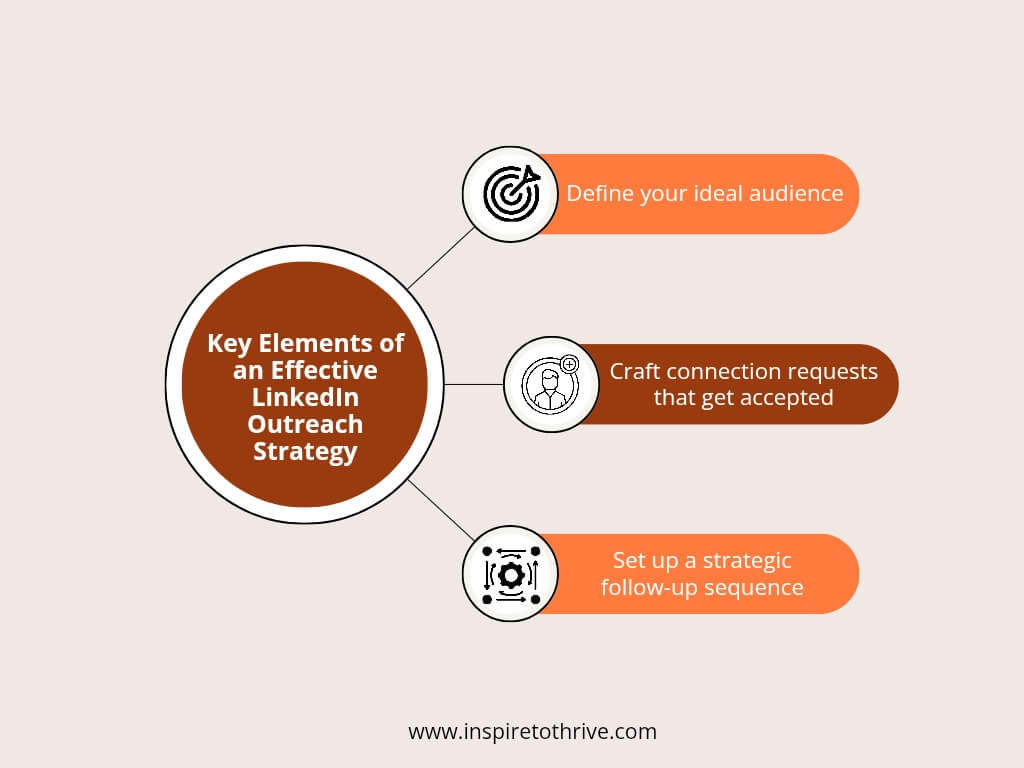
3. Set Up a Strategic Follow-Up Sequence
Not everyone will respond to your first message, and that’s normal. A well-planned follow-up sequence keeps the conversation going without being pushy or spammy.
You can send the first follow-up message after 3–5 days of sending the first message. Make it a simple message that adds value, such as sharing an insightful article or asking a relevant question.
Then, follow up again after about 10 days with a polite check-in, acknowledging that they might be busy and offering to connect at a more convenient time.
How Automation Enhances LinkedIn Lead Generation
Manual prospecting, follow-up, and response tracking can be time-consuming and unsustainable. Using LinkedIn automation tools streamlines the process without sacrificing personalization.
Here’s how automation can help you acquire quality leads:
1. Send Personalized Connection Requests at Scale
Automation helps you send multiple connection requests while maintaining a personalization level. Instead of sending each request manually, you can use customized templates that auto-fill key details like the recipient’s name, company, or industry.
I use the LinkedIn automation tool—Dux-Soup—for this. With the tool, you can create intelligent campaigns that automatically view, follow, and endorse profiles and send LinkedIn connection invitations and messages.
The entire process is automated, personalized, and has custom time delays, giving the prospect the impression that they’re interacting with a real person.
Dux-Soup increases your chances of getting genuine LinkedIn connections without spending hours on manual outreach.
2. Automate Message Sequences
A single connection request isn’t enough to build a relationship and get prospects to respond immediately. Follow-up messages are essential.
Automated message sequences ensure you consistently follow up with prospects without manually tracking each interaction. What this means is after the automated connection request, your prospects will receive follow-up messages nudging them to start a conversation or go straight into your sales funnel.
The process is straightforward and requires little input besides setting up the sequence.
3. Automate LinkedIn Outreach with Track Responses and Engagement
One of the biggest advantages of outreach automation is that it analyzes response patterns and adjusts your outreach strategy accordingly. Tools like Dux-Soup effortlessly do this.
You can easily track who accepts your connection requests, which messages get the highest response rates, and the best times and days for engagement.
Many LinkedIn automation tools make it easy to track these metrics, enabling you to fine-tune your outreach and improve your lead-generation efforts.
4. Nurture Leads with Targeted Content
Automation isn’t just for generating leads; it’s a powerful tool for keeping them engaged. Some automation tools allow you to share valuable personalized content, send timely check-ins, and invite prospects to relevant webinars or discussions. This keeps your brand top-of-mind, and moves leads closer to conversion without overwhelming them with sales messages.
The role of automation is vital here. It’s almost impossible to turn prospects into clients without properly nurturing them. You need to earn their trust and stay top-of-mind so they don’t look elsewhere when they’re ready to purchase.
5. Makes Manual Engagement Better
While automation speeds up your outreach, conversations should never feel robotic. Your prospects can quickly tell when they’re receiving a mass message with no real thought behind it.
But that’s one of the benefits of automating LinkedIn outreach and lead gen with a tool like Dux-Soup. It eliminates repetitive tasks and allows you to engage manually where necessary. For example, you can manually engage with your lead’s LinkedIn posts or take conversations beyond automation when a lead shows interest.
Combining automation with thoughtful manual interactions makes your outreach campaigns more efficient, personalized, and authentic, helping you build stronger connections and convert more leads.
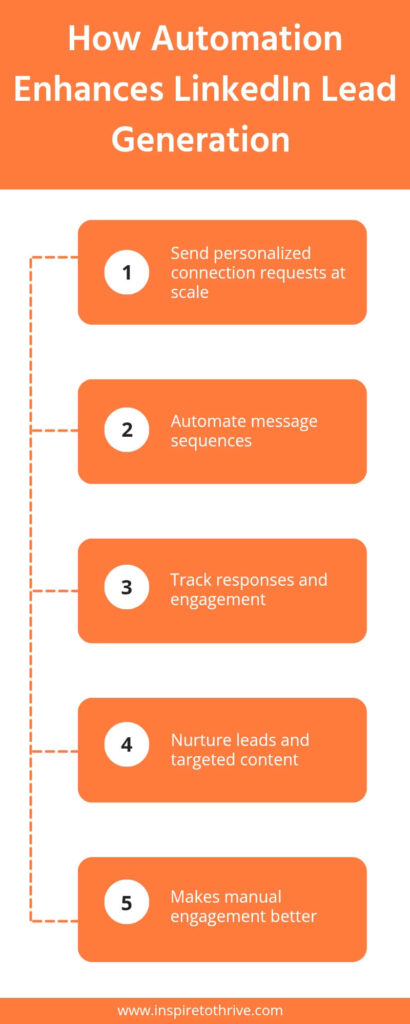
The Best Tools to Automate LinkedIn Outreach
There are many LinkedIn automation tools available. But the right tool should:
- Help you personalize messages instead of sending generic spam.
- Automate follow-ups without overwhelming recipients.
- Keep you compliant with LinkedIn’s rules to avoid getting flagged.
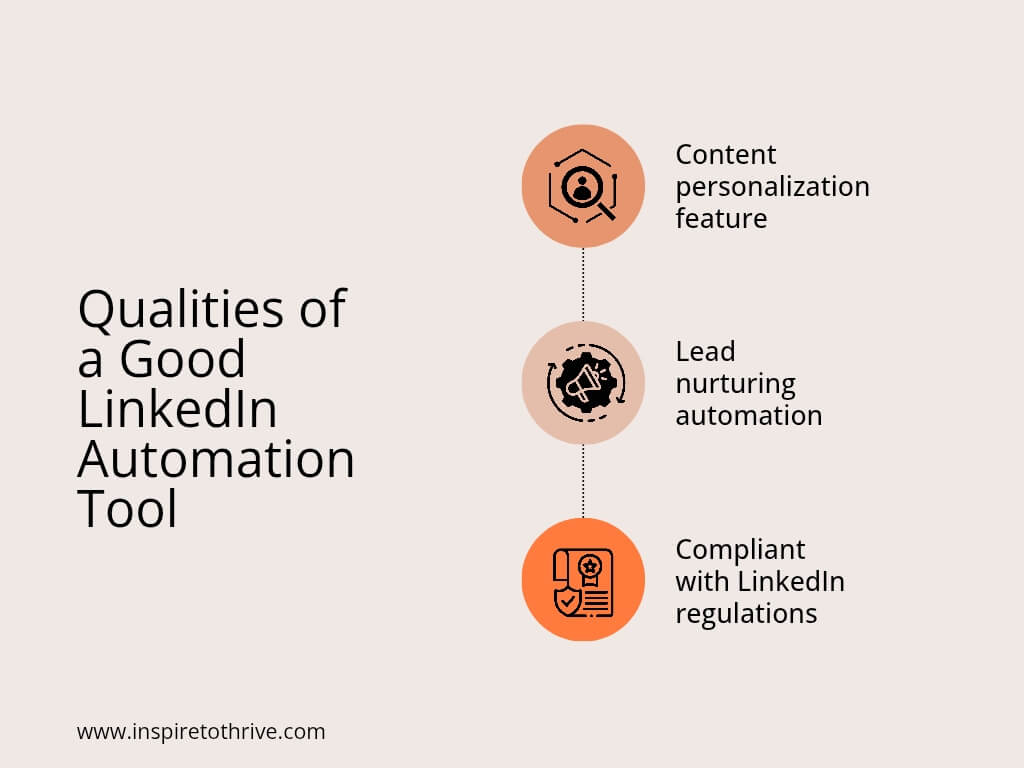
I’ve tested multiple solutions for automating LinkedIn outreach, and Dux-Soup stands out.
Dux-Soup is the go-to LinkedIn automation tool for getting fresh, qualified leads every day. It is available in both cloud and browser options. It’s been around since 2015 and has hundreds of thousands of trusted users. Here are standout features that make Dux-Soup highly rated amongst LinkedIn automation tools:
- LinkedIn campaign automation
- 12-Step outreach workflows
- Unlimited concurrent campaigns
- Campaign analysis
- Lead management
- CRM integration.
Many users have attested to the awesomeness of Dux-Soup, as you can see on platforms like Chrome Web Store and G2 Score, where it has 4.4 and 4.3-star ratings, respectively.
Dux-Soup is available for two weeks for free. During this time, you can test it out and determine how it fits into your sales and marketing strategy.
Best Practices for Using LinkedIn Automation Without Getting Penalized
LinkedIn has strict policies against spammy or aggressive automation messages, and failing to comply can result in account restrictions or permanent bans. However, if you use automation correctly, you can improve your outreach results without violating LinkedIn rules.
Here’s how to stay compliant while using automation for lead generation:
1. Keep Your Daily Connection Requests Within LinkedIn’s Safe Limits
LinkedIn limits the number of connection requests users can send per day to prevent spam and maintain platform integrity. While the exact number varies, the general safe range per user is 20–50 daily connection requests.
Exceeding this limit, especially for new or inactive accounts, can trigger LinkedIn’s spam detection system, and the platform will limit your account.
To be safe, use LinkedIn automation tools to handpick the best prospects and send them connection requests. Do not send too many requests simultaneously to avoid being flagged.
2. Don’t Send the Same Message to Hundreds of People
Many people make this mistake with LinkedIn automation. LinkedIn’s algorithm detects patterns and may flag repetitive messages as spam.
To avoid this, segment your audience based on factors like industry, job, role, location, etc, and personalize messages based on these segmentations.
3. Manually Engage with Your Prospects
Automation should enhance your outreach, not replace real engagement. LinkedIn favors organic interactions, so you must balance automation with manual engagement.
A good approach is to respond manually when someone replies to your automated message and to like and comment on your prospects’ posts to create familiarity and trust. You can also engage in LinkedIn groups related to your industry to establish credibility before reaching out to your prospects.
Automate Your LinkedIn Outreach for Better Results
Automating LinkedIn outreach allows you to generate leads efficiently, nurture relationships, and follow up strategically without the time-consuming effort of manual outreach. When done right, it enhances engagement while keeping your approach personalized and authentic.
Investing in the right tool for LinkedIn outreach automation is one of the biggest investments you can make in improving client prospecting. Although many tools are available, Dux-Soup stands out for its powerful features.
If you want to scale your outreach while maintaining a human touch, check out Dux-Soup here. You can take advantage of the two-week free trial to see how it fits your strategy.
- Instagram Reels On TV: Should Your Content Hit The Big Screen? - December 18, 2025
- Valuing a Blog Business: 9 Mistakes That Lower Your Price - December 17, 2025
- How to Hide Followers on Instagram from Others: Simple in 2026 - December 15, 2025
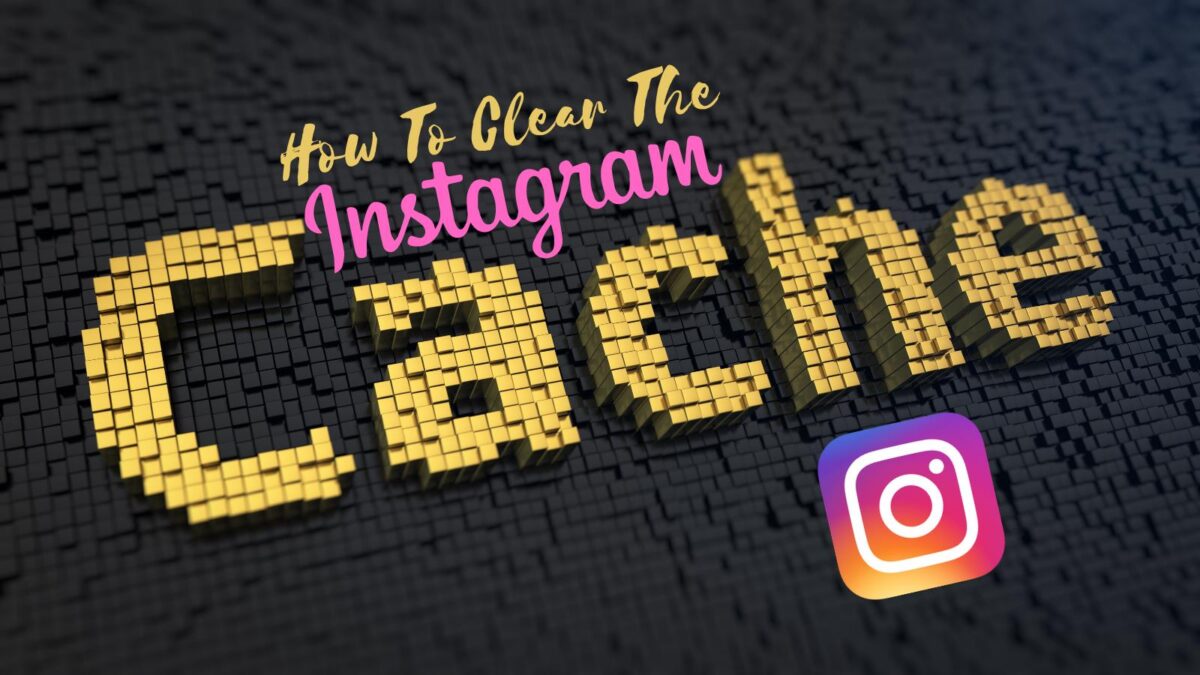
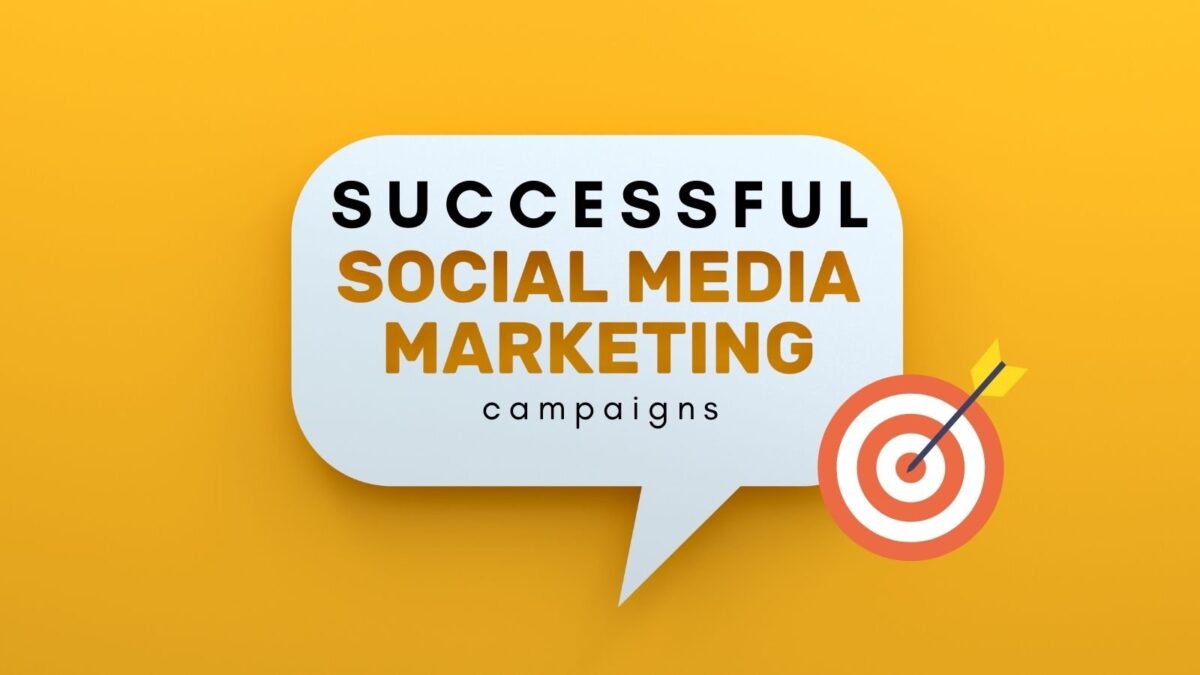


Hi Vishwajeet, Don’t those DMs both you? If not solicited I think they can be a major turnoff. Thanks for coming by and have a great day.
Hello, Lisa,
LinkedIn is a networking site for connecting with Professionals worldwide. I also receive these outreach emails on my linkedin account where businesses trying to convince me for their products and services. It’s a great way to connect with your connections professionally.
Regards,
Vishwajeet Kumar